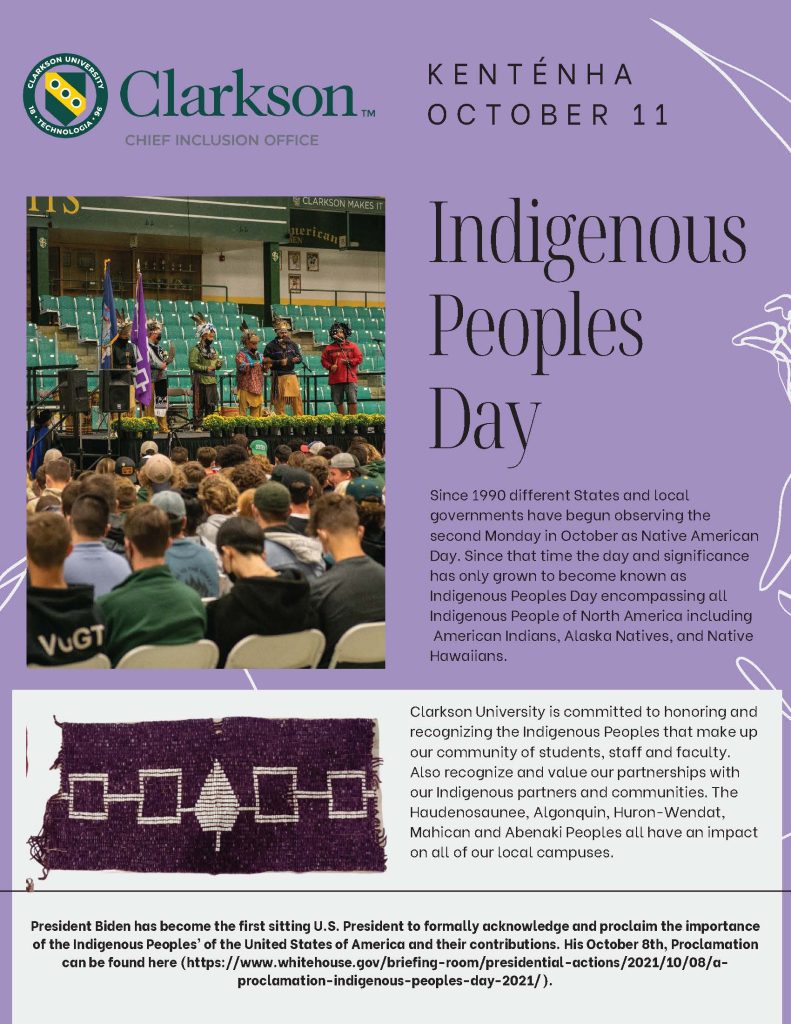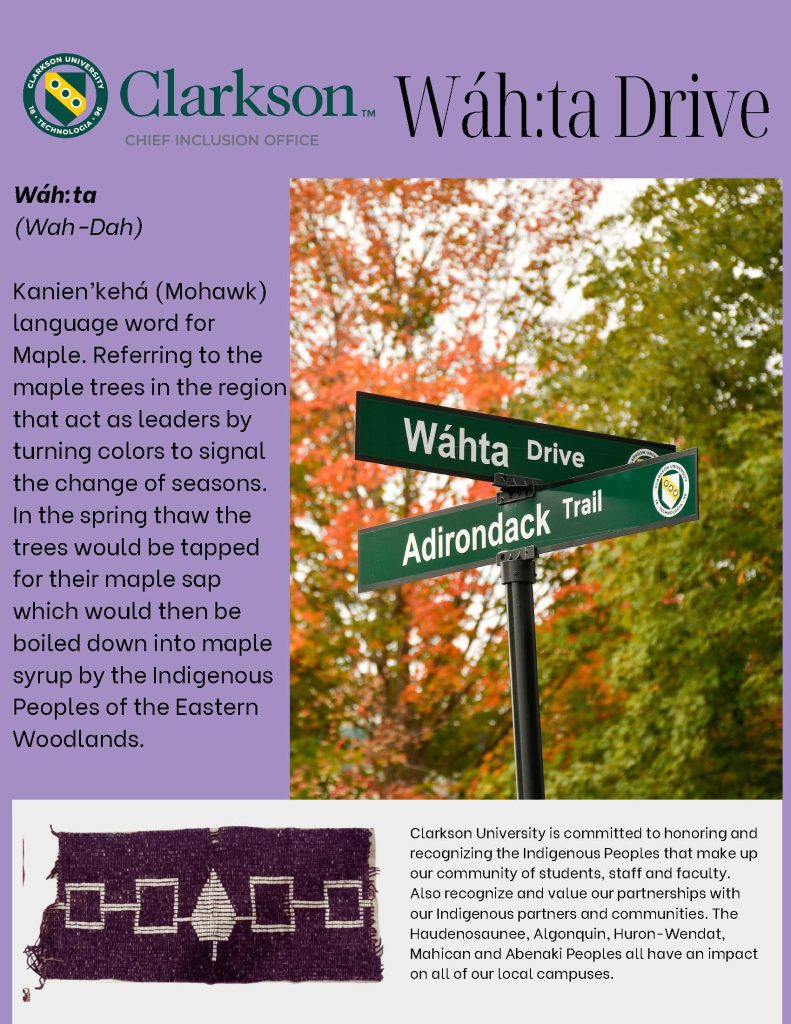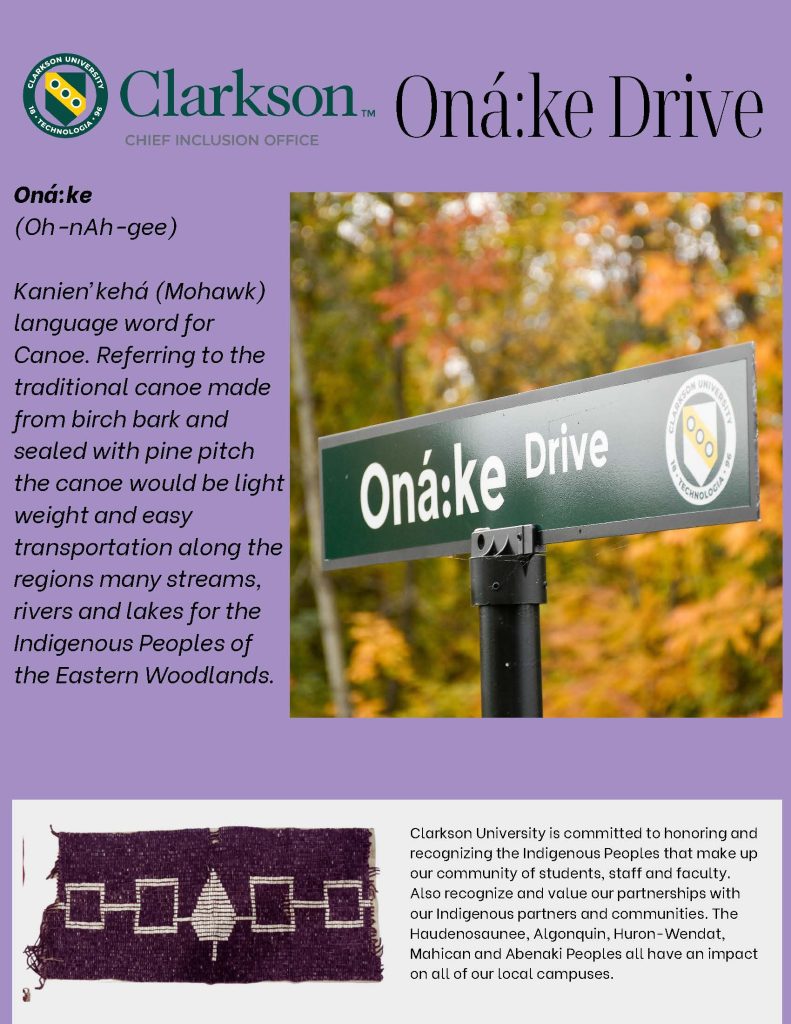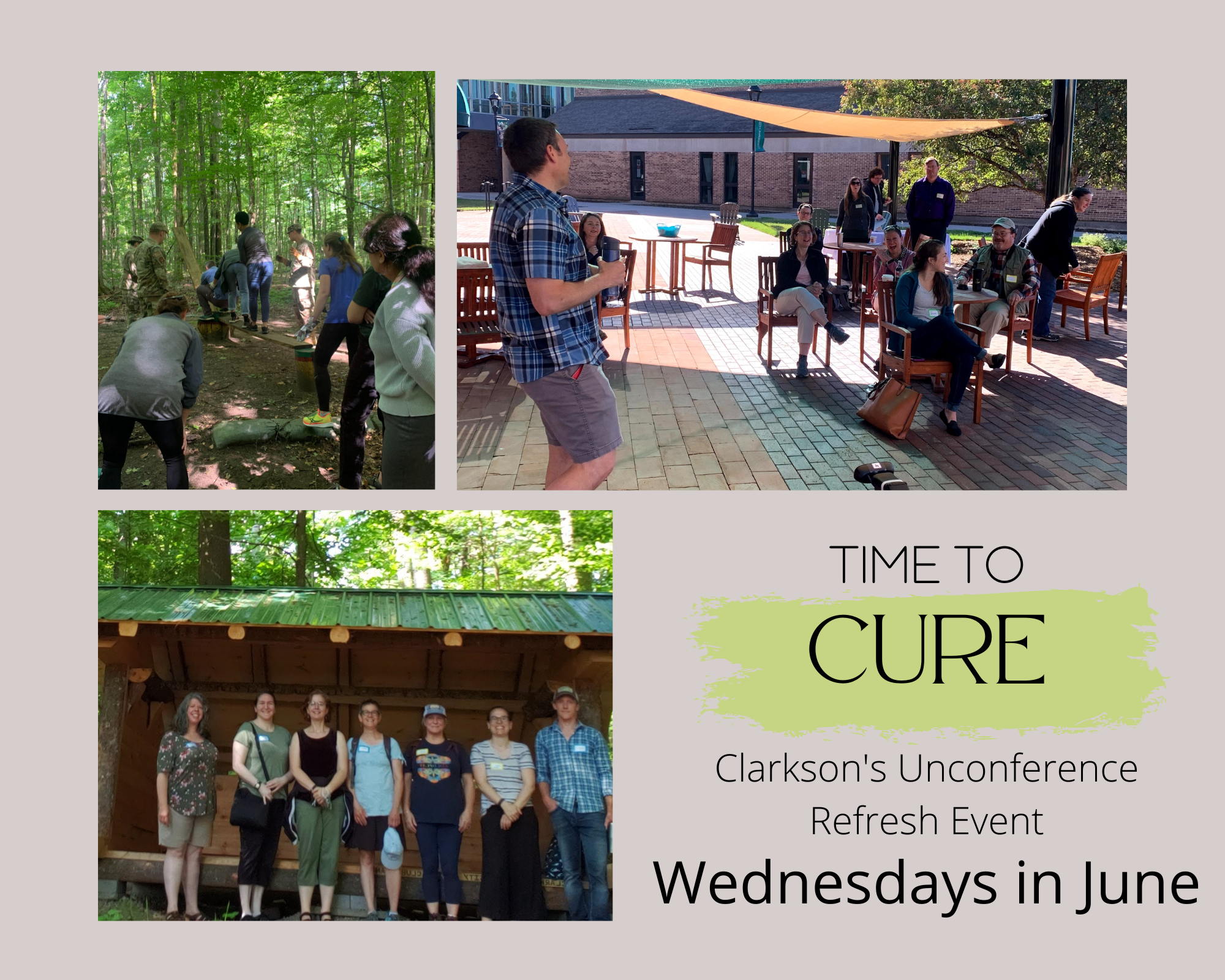Kenténha/October 11

Since 1990 different States and local governments have begun observing the second Monday in October as Native American Day. Since that time the day and significance has only grown to become known as Indigenous Peoples’ Day encompassing all Indigenous People of North America including but not limited to American Indians, Alaska Natives, and Native Hawaiians.
President Biden has become the first sitting U.S. President to formally acknowledge and proclaim the importance of the Indigenous Peoples’ of the United States of America and their contributions. His October 8th, Proclamation can be found here (https://www.whitehouse.gov/briefing-room/presidential-actions/2021/10/08/a-proclamation-indigenous-peoples-day-2021/).
Clarkson University is committed to honoring and recognizing the Indigenous Peoples’ that make up our community students, staff, faculty and partnerships. The Haudenosaunee, Algonquin, Huron-Wendat, Mahican and Abenaki Peoples all have an impact on all of our local campuses.

As part of that commitment Clarkson University Potsdam Hill Campus has recent added street names that come with Indigenous meaning and pronunciation.
Wáh:ta Drive
(Wah-Dah)
Kanien’kehá (Mohawk) language word for Maple. Referring to the maple trees in the region that act as leaders by turning colors to signal the change of seasons. In the spring thaw the trees would be tapped for their maple sap which would then be boiled down into maple syrup by the Indigenous Peoples of the Eastern Woodlands.

Adirondack Trail
Atiró:taks
(Ah-de-LOON-da-ks)
Kanien’kehá (Mohawk) language word for ‘bark eaters’. Referring to the group of Algonquin people that lived in the high mountains and would sustain themselves by gathering food from the environment including select barks and herbs. Later this term would be affixed to maps of the region and would become known as the Adirondacks today.

Oná:ke Drive
(Oh-nAh-gee)
Kanien’kehá (Mohawk) language word for Canoe. Referring to the traditional canoe made from birch bark and sealed with pine pitch the canoe would be light weight and easy transportation along the regions many streams, rivers and lakes for the Indigenous Peoples of the Eastern Woodlands.

